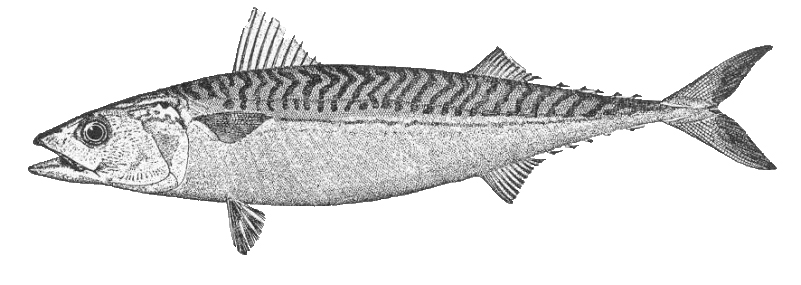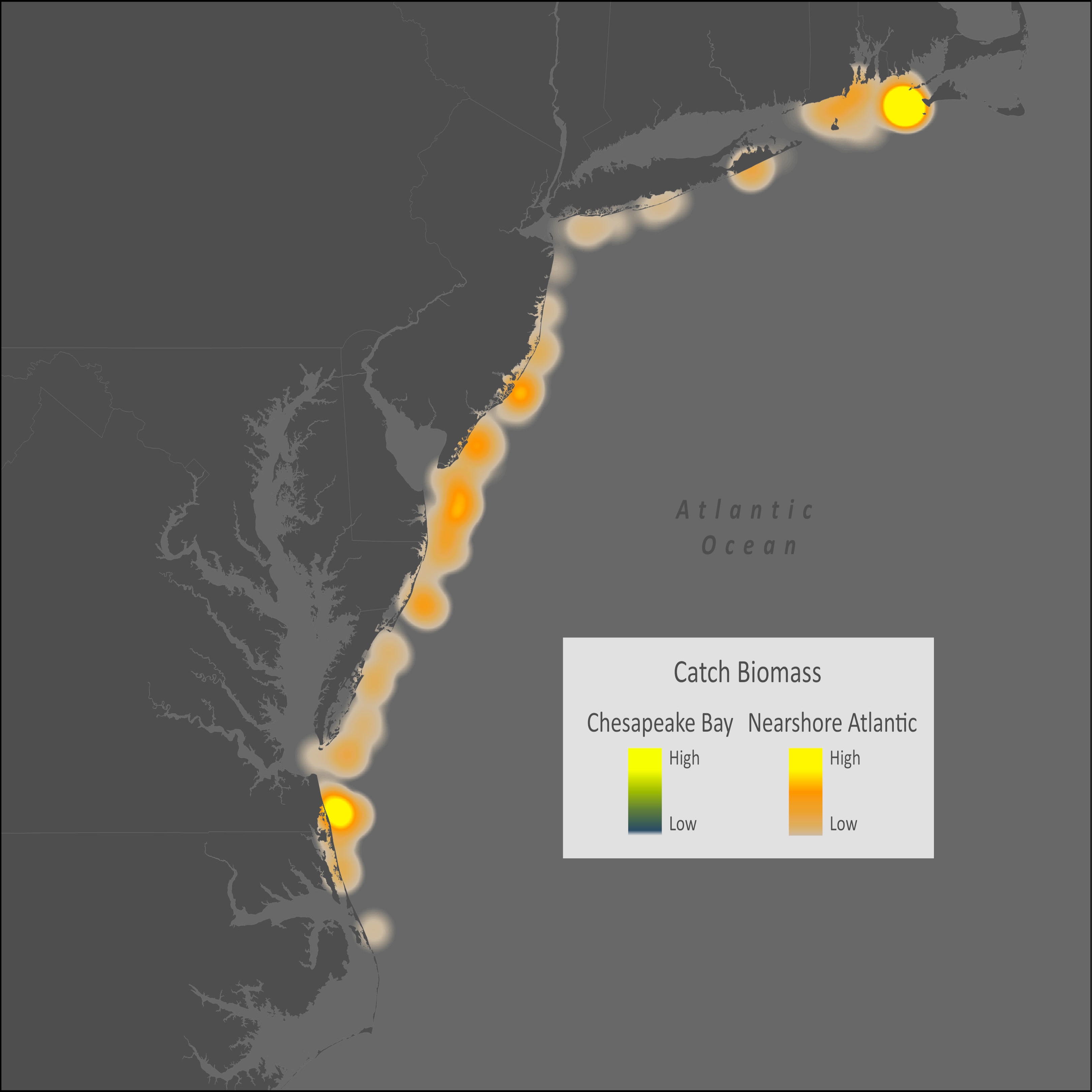Atlantic mackerel - Scomber scombrus
*Information from FAO Species Identification Guide Western Central Atlantic*

Size
Maximum fork length is 50 cm, common to 30 cm. In the population off the US coast, length at first maturity is approximately 34 cm in females and 32 cm in males; in the eastern part of the geographical distribution, maturity may be attained at approximately 30 cm. Females grow bigger than males.
|
Diagnostic characters
Palatine wide, teeth in two widely spaced rows. Space between first dorsal fin groove and second dorsal fin clearly greater (approximately 1.5 times) than length of groove; anal fin origin opposite that of second dorsal fin or nearly so; anal fin spine conspicuous, joined to the fin by a membrane but clearly independent of it. Swimbladder absent. Vertebrae 13 precaudal plus 18 caudal; first haemal spine anterior to first interneural process; 21 to 28 interneural bones under first dorsal fin. Colour: markings on back oblique to near vertical, with relatively little undulating; belly unmarked.
|
Habitat, biology, and fisheries
An epipelagic and mesodemersal species,most abundant in cold and temperate, shelf areas. Atlantic mackerel school by size.They overwinter in deeper waters but move closer to shore in spring when water temperatures range between 11° and 14° C. Two separate populations with little or no interchange seem to exist in the northwestern and northeastern Atlantic (including the Mediterranean).
In the western population spawning takes place from Cheasapeake Bay to Newfoundland, initiating in the south in spring and progressively extending northward during the summer. Most of the spawing take place within 10 to 30 miles from shore, but never in low-salinity estuaries. Large fish are the first to arrive at the spawning sites. The eastern population spawns from March to April in the Mediterranean, from May to June off southern England, northern France and in the North Sea, and from June to July in the Kattegat and Skagerrak. Fecundity, in a medium-sized female, fluctuates between 200 000 and 450 000 eggs per season and increases with size; spawning occurs in batches. Maturity is attained at an age of 2 or 3 years. Juvenile Atlantic mackerel feed on zooplankton (fish larvae, small crustaceans, pteropods).As they grow, they are in turn preyed upon by tunas, sharks and dolphins.
|
Distribution
North Atlantic Ocean, including the Baltic Sea; eastern Atlantic including the Mediterranean and the Black seas; and western Atlantic from Labrador to Cape Lookout
|





